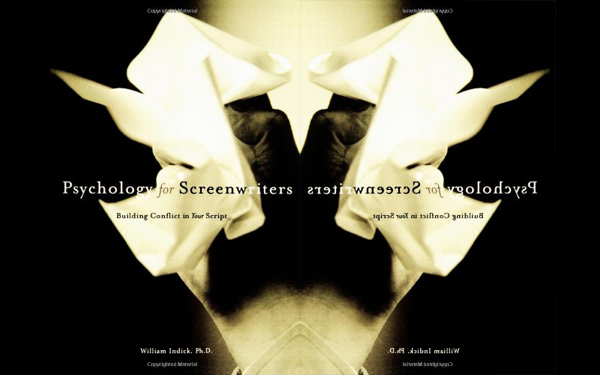
William Indick
This article was originally published in November 2015.
There is nothing like a film that jolts your emotions. Whether you are moved to tears, or nearly fall on the floor laughing. When your reactions to a story are vivid you will remember the story long after you’ve digested the popcorn and moved on with life. It is indelible. But lasting connections do not just happen, especially in works of literature or in film. It is the result of calculated writing, which includes an understanding of human behavior and the relationship between conflict and human emotion.
In Dr. William Indick’s book, Psychology for Screenwriters, he reveals the secrets of literary giants like Shakespeare and the Greeks, while revealing an in-depth analysis of film characters, the essential dynamic of conflict, and the use of archetypes in film through the power of storytelling. Indick is a screenwriter, author, and a professor of psychology at Dowling College in New York.
According to Indick, “film is the greatest medium of fantasy ever created,” and he believes that “Film is an extremely powerful psychological force.” If this is true, then we don’t just go to the movies to be entertained. There is something deeper going on.
Theory Of Mind
In the world of cognitive psychology, the “theory of mind” involves the way humans acquire knowledge and understanding via thought, life experience, and the senses. Indick refers to this process as the “first order theory of mind,” where there is understanding that “I have my own private world of consciousness – a mind of my own.”
There is also the “second order theory of mind,” which is largely related to trying to figure out what other people are thinking. “We spend a tremendous amount of brain energy immersed in the second order theory of mind. We do this naturally, all the time, and it’s not enjoyable.”
“Film gives us the opportunity to put our minds in the brain of another person, and also try to understand people through that person’s eyes (third order theory of mind). So, film works primarily on an unconscious level, because theory of mind is all unconscious – we don’t think about it – we just do it, constantly. So, if we understand that the process of identification with characters happens naturally and automatically, we can use that understanding to either strengthen the sense of identification with a character, or to push the character into plots and scenarios that are original or unique without losing the attachment (identification) that the viewer has with the character. This is how stories transport us to different dimensions.”
The vehicle of transport is Story, the seat in the vehicle is Character, and identification is the belt that straps us in – William Indick

With this understanding, it becomes easy to see why we relate to characters. Well-written characters exhibit a sense of humanity that makes us feel important, alive and understood. In the world of film, action is what drives the plot forward, but conflict is at the helm of all action, and tightly woven into the life of the hero. These elements are intrinsically conjoined; they are organic, and for a story to work, conflict must be present from the beginning to end.
Conflict & Character
“Conflict is the essence of story and drama, but what makes good conflict depends on the character. Getting up and walking to the drug store doesn’t sound like a very good conflict, but what if the character is a paraplegic, and what if the drug store has a dose of insulin that can save the character’s dying wife, who is lying in a coma? In the end, conflict is always an expression of the character’s motivation, balanced with the challenge of the problem he must solve, given his abilities and limitations, and the resources he has at hand,” said Indick.
When there is a lack of dramatic conflict in a script, the characters are boring. This not only leads to an underdeveloped character, but often times a writer will rely on dialogue to spice up the action. There can be numerous issues with screenplays that are dialogue-driven, but it generally begins with a lack of conflict in the story. Dialogue is not about chitchat – it is a part of the action.
If the dialogue is not connected to action, it will take away from the plot and the healthy development of the character. There is nothing worse than reading a script that is laden with excessive chatter. A lack of conflict breeds stagnation. There is no movement. The story is flat.
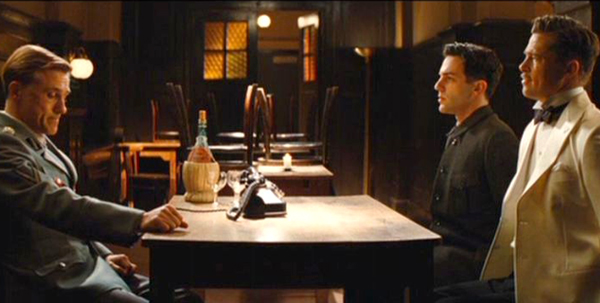
Christoph Waltz as Col. Hans Landa, B.J. Novak as Pfc. Smithson Utivich and Brad Pitt as Lt. Aldo Raine in Quentin Tarantino’s Inglourious Basterds
“Character is action. A character is like a shark. Just as a shark needs to keep moving in order to breath, a character needs to keep developing in order to live. If a character stops developing, there is no forward action at the heart of the film (at the psychological/emotional level). Even if there’s tons of car chases and battle scenes, if the character is not developing, there is no meaningful action,” said Indick.
Screenwriting is an amazing creative art form, because there are all of these elements that are essential for a story to work in film. Screenwriters often dispute about the weight of importance that these elements play when the blueprint is being drafted. However, they are so intricately connected, one really cannot be placed above the other. According to Indick, “Plot is the rhythm-keeper in the story, as a film proceeds from scene to scene, but there’s rhythm within scenes as well, which is mainly set by dialogue.”
Perhaps the real issue surrounds balance. Being able to master all of the elements, while writing what the story demands. Plot is related to action; it is the “rhythm-keeper,” while action is connected to the movement and development of character, and dialogue that adds energy to the plot and character. Indick admits this balance and rhythm is very broad. “Plot and character development go hand-in-hand, and it’s mainly the job of dialogue to balance these two forces and keep them moving forward together; however, film is a visual medium, and oftentimes plot and character can be moved forward in purely or primarily visual ways. Wes Anderson is a good example of this. He expresses a lot of character and plot through his set design and by purely visual devices,” said Indick.
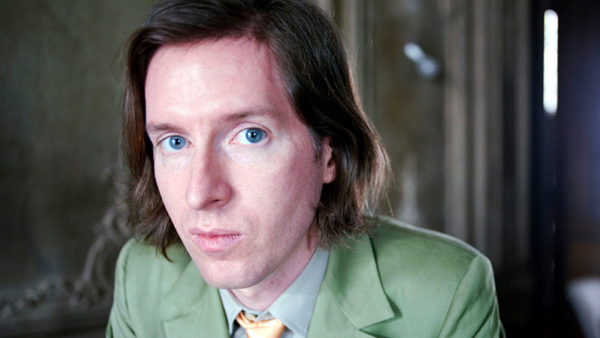
Wes Anderson
The importance of character development as related to plot cannot be understated, and at the helm of this masterful sequencing, is the evolution of the hero. Without the hero, you have no story. Everything hinges on this character and his or her journey. A journey riddled with one obstacle after another; a journey characterized by the need or driving goal of the hero, and a journey marked by psychologically resonant universal concerns that can be sensed by everyone.
There is nothing “easy” about creating this kind of character. In the same manner than we have multifaceted personality traits, so too, your hero should parrot a complete human. Characters that have moral and psychological needs are more powerful characters. Bottom line – one-dimensional characters are unexciting. When a hero has a moral and emotional compass that is seen from the beginning, the possibilities for growth and change while on the journey are heightened, especially as the character battles internal and external conflict. William Shakespeare’s Hamlet comes to mind.
There is no doubt that William Shakespeare’s Hamlet continues to be one of the most intriguing, highly analyzed and performed plays ever written, and Hamlet’s psychologically-driven, complex character is arguably one of the greatest dramatic characters ever created. Hamlet is not one-dimensional. He is propelled by his emotions, and to that end Shakespeare explores all sides of Hamlet’s emotional make-up. From the moment this disconsolate prince enters the scene, the audience/reader is made acutely aware of his conflicted soul. This tragic hero is a walking dichotomy that provokes every sort of human emotion, and sets the stage for the revengeful plot to be carried out.

Laurence Olivier as Hamlet (1948)
Shredded by internal conflict, Hamlet is grief-stricken, outraged and tormented by the knowledge that Claudius murdered his father. However, it is not just the morbid reality of his father’s passing or his mother marrying Claudius, the now-reigning king. He questions everything about life and death in his famous soliloquy:
To be, or not to be? That is the question:
Whether ‘tis nobler in the mind to suffer
The slings and arrows of outrageous fortune,
Or to take arms against a sea of troubles,
And by opposing end them?- To die, – to sleep, –
No more; and by sleep to say we end
The heartache, and the thousand natural shocks
That flesh is heir to,-‘tis a consummation
Devoutly to be wish’d. To die, -to sleep; –
To sleep; perchance to dream: -ay, there’s the rub;
For in that sleep of death what dreams may come,
When we have shuffled off this mortal coil,
Must give us pause: there’s the respect
That makes calamity of so long life…
William Shakespeare; Hamlet (Act 3. Scene I.)
As he questions life and death, Hamlet moves into a very dark, contemplative state, and exposes flaws in his thinking, which include his conflicting views on death and nobility, his own possible fate. The ghost demands revenge and at Hamlet’s hand, and Hamlet is morally compromised. Is murdering Claudius justifiable? Do two wrongs make a right? It is a weird reality to consider committing the same act that he seeks revenge for. In all of Hamlet’s questioning, one thing is certain: he is laden with philosophical questions and watching him struggle to find answers to his questions humanizes him. In Hamlet, we see the best and worst of human nature, and we connect to him.
In Joseph Campbell’s masterpiece, Hero With a Thousand Faces, he breaks down the journey of the hero that is seen in all myth, storytelling, drama, religious ceremony, and psychological development. Campbell’s understanding of Greek mythology, the journey of the hero, and the human condition was brilliant, and according to Indick, Campbell used the term “a thousand faces” for good reason. Writing a journey into the unknown requires tremendous preparation. This writing adventure is not about tossing a coin into the air and waiting to see how it lands. This adventure is creative, but calculated.
“Like any journey, its success is predetermined by the amount of preparation the journeyman [writer] takes upon himself. The journeyman should know the final destination, as well as any main stops he plans to make upon the way (though these may change). The journeyman should know beforehand what he will need to succeed on his adventure, and he should plan accordingly. These preparations could be summarized in the term: ‘Structure,’” said Indick.
While the word “structure” might make some writers cringe, it is akin to an architect’s blueprint – no blueprint; no building. In fact, an accurate well-developed blueprint is probably the most important element in architectural engineering. Consider some of the great structures of the world. They did not just happen on a whim. When William F. Lamb designed the Empire State Building, he had a plan for the 102-story skyscraper, and that building is the physical manifestation of structure.

The Empire State Building. Image by Daniel Schwen
Revealing the need or motivation of the hero is a huge part of character structure, and this must be seen from the get go and if action is attached to want, it will serve you. No person alive performs an act without a motive. Motive is the catalyst that drives a person to act. In like manner, character motivation breeds’ action, and the thoughts and qualities revealed by the characters, helps to authenticate them. We may not agree with their motive, but we do understand certain qualities within a personality, and this somehow unifies us. We identify with the character.
“The hero is the audience’s point of identification, and his ‘need’ is his motivation. In the film Star Wars, it would have been enough for young Luke Skywalker to leave his home planet of Tatooine to fight the good fight against the evil empire, but Lucas loaded him up with a lot more need, including the death of his aunt and uncle, the longing for adventure, and the search for identity through his quest to learn about his father and to become a Jedi. The more need you can reasonably load onto a hero, the more fuel he will have for the long journey ahead,” said Indick.
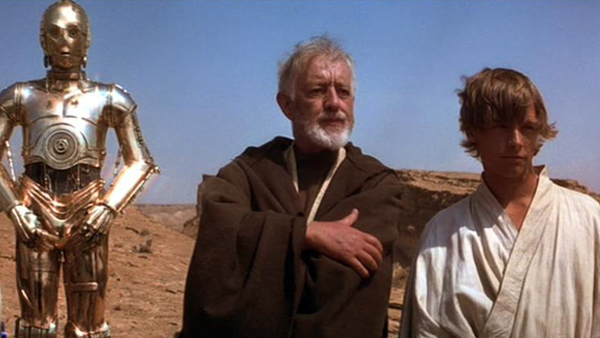
Anthony Daniels as C-3P0, Alec Guiness as Ben Obi-Wan Kenobi and Mark Hamill as Luke Skywalker in Star Wars: Episode IV – A New Hope
In the film Thelma & Louise, these ladies are on a journey of self-discovery. What begins as a joy ride for a weekend of freedom from their boring, mundane lives, becomes a crazy crime-laden odyssey alternating between drunken hilarity, their desperate need for change, and the empowerment of personal choice to “never” return to anything that resembles their former lives. This empowerment leads both of them into a very unexpected finale – a double suicide. Both of these characters are loaded with psychological complexities – complexities that make death an odd kind of freedom, and in their case – the only freedom. With an army of police behind them, police helicopters above them, and the Grand Canyon in front of them, there is only one choice that will guarantee transformation.
Note the ending excerpt:
LOUISE
Are you sure?
Thelma nods.
THELMA
Hit it.
Louise puts the car in gear and FLOORS it.
CUT TO:
EXT. DESERT – DAY
Hal’s eyes widen for a moment at what he sees, and then a sense of calm overtakes him and he mouths the word “alright.”
B.B. KING SONG (V.O.)
I’ve been around, I’ve seem some things, People movin’ faster than the speed of sound, faster than a speedin’ bullet. People livin’ like Superman, all day and all night. I won’t say if it’s wrong or I won’t say if it’s right. I’m pretty fast myself. But I do have some advice to pass along, right here in the words to this song…
EXT. DESERT – DAY
The cops all lower their weapons as looks of shock and disbelief cover their faces. A cloud of dust blows THROUGH THE FRAME as the speeding car sails over the edge of the cliff.
B.B. KING SONG (V.O.)
Better not look down, if you wanna keep on flyin’. Put the hammer down, keep it full speed ahead. Better not look back or you might just wind up cryin’. You can keep it movin’ if you don’t look down…
FADE OUT
The complexities that surround Thelma and Louise are many, and their need for something “different” takes them out of their “ordinary” world. The plot in this screenplay works beautifully, but it is deeply connected to the development of these two characters, even though death becomes their “happy” ending.
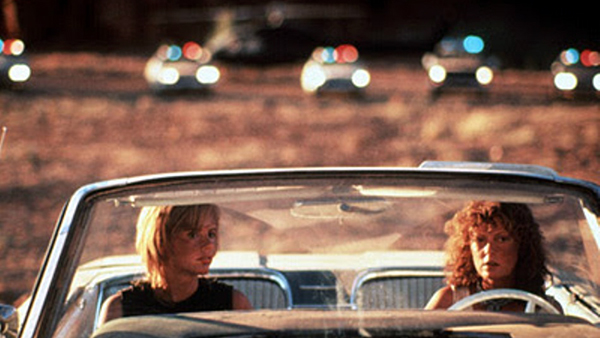
Geena Davis as Thelma and Susan Sarandon as Louise in Thelma and Louise
“In my opinion, plots fail when writers forget about character development, or when they put the needs of the story ahead of the needs of the character,” said Indick.
Since story is reliant on upon outer and inner motivation of a character, it becomes easy to see why flawed characters add layers to the emotional set up of the characters. These multi-dimensional characters must transition from broken to whole by the end of the movie. So, characters that have weaknesses (multiple flaws), such as moral conflict and psychological issues are easier to relate to, and they add an emotional component to the story. “Humans are inherently dualistic, and while flawed characters don’t always make better characters, often times this is true, because they represent more accurately the dualistic nature of all of us. One-dimensional characters (people who are only good or bad) are less interesting than two-dimensional characters (flawed). However, the most interesting character is a three-dimensional character; a character who is aware of his good side and also aware of his bad side, and who is actively struggling with himself, expressing his conflicted side in a way that goes beyond morality or any simple definitions of goodness and badness. Anakin Skywalker is a classic example,” said Indick.
When the characters in a story make an emotional connection with an audience, the story itself will be stronger and more impacting. This kind of writing allows the audience to viscerally experience the story in a much deeper and intimate way, and when this transpires… well, that’s just good writing.
If you enjoyed this article, don’t forget to check out William Indick’s book, Psychology for Screenwriters.
